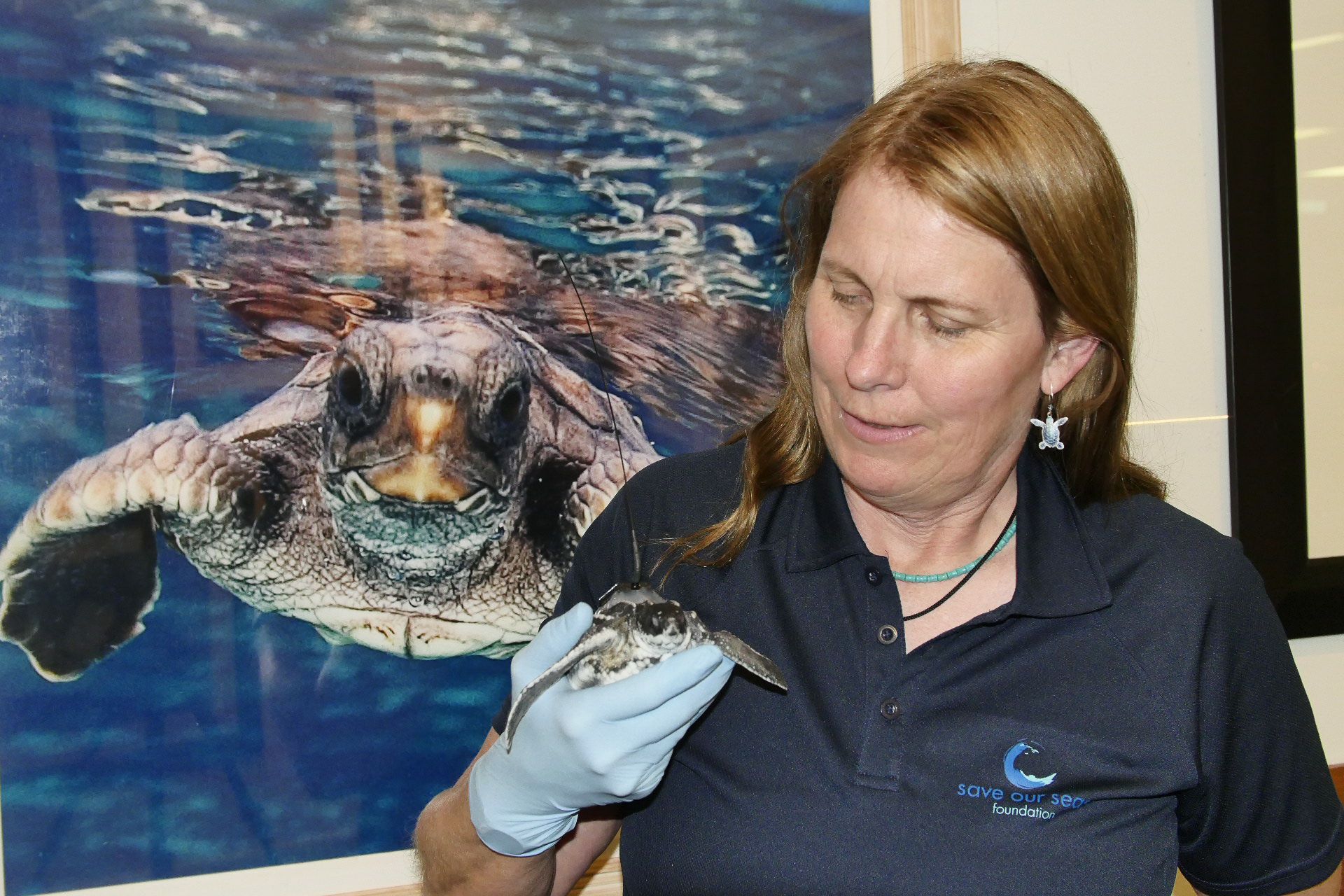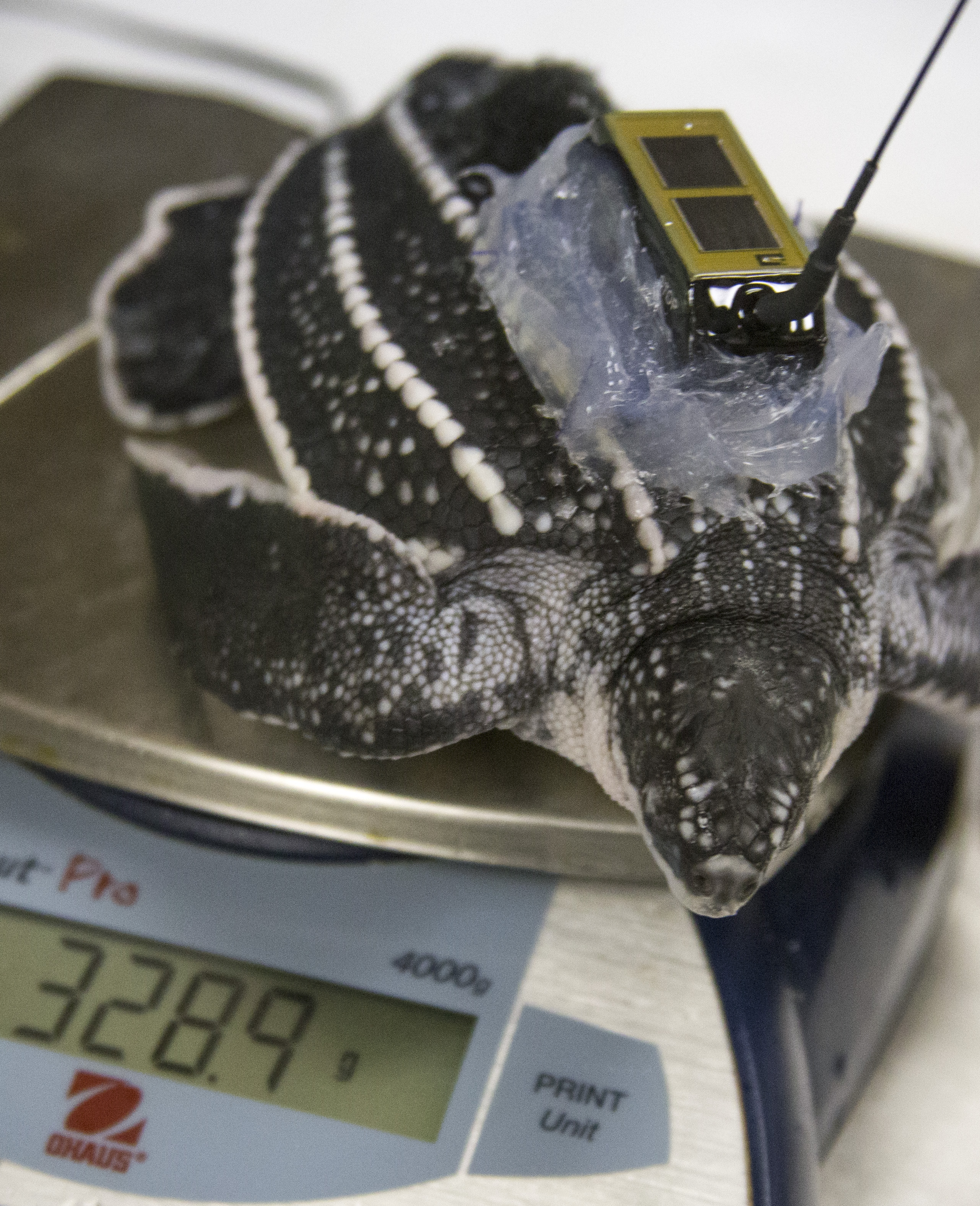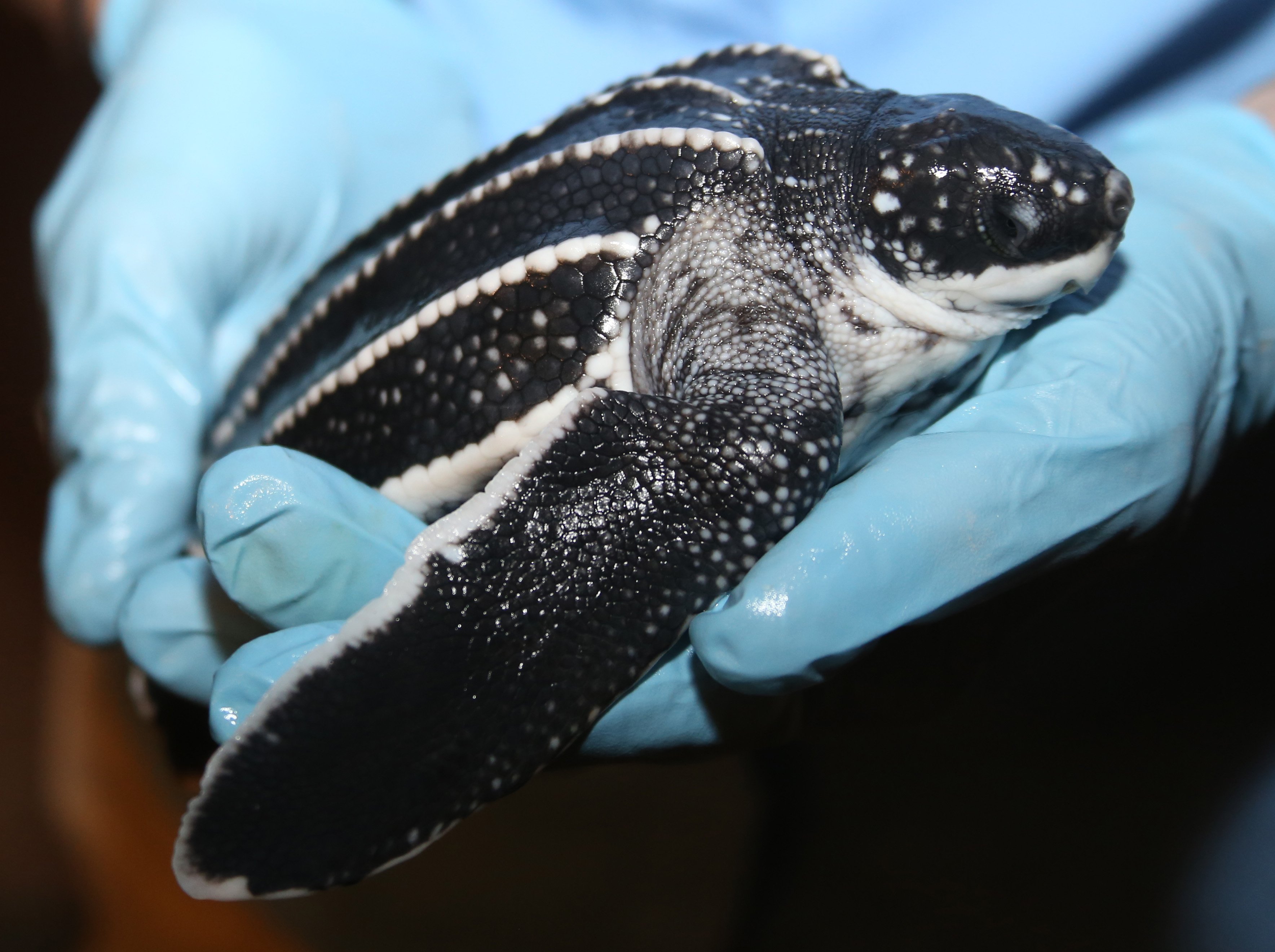Getting e-mails from turtles
To conserve marine animals, we need to understand what they require in terms of habitat. In other words, it is important to know where the animal goes, why it goes there and how it selects optimal habitats at different times and in different places, so that those locations can be protected. Marine turtles spend more than 99.9% of their lives at sea, which makes satellite tracking an invaluable tool for obtaining that information and one of the few options available to us to find out where they go.
Dr. Kate Mansfield and I are developing ways to identify turtle nursery areas by using very small-scale satellite tracking devices. Each neonate turtle we tag becomes something of a star in our scientific world, as we give it not only an ID number, but also a nickname as we get to know it through its travels. That seems only fair, since every few days it sends us an e-mail with its location.

A tagged leatherback sea turtle on deployment day. Photo by J Abernethy | © Save Our Seas Foundation
We are, in some ways, dispassionate scientists, but we care about the animals we study and about doing good science. So for us one of the most exciting moments is when a newly tagged turtle sends home its first location, and it’s not uncommon to hear a loud ‘Hurray!’ in the lab when that first message comes in. That means the tag is working and the turtle is OK – and we’re about to learn something we didn’t know before. And, as for disappointed parents, when we don’t get a message it’s cause for concern.
What does it mean when the messages stop? In the case of our small sea turtles it can mean one of three things: the tag has stopped working, the turtle is dead or the tag has fallen off.
We want the tags to fall off and we design them to do so, but only after weeks or months when the turtles have outgrown the tag attachments and, hopefully, we have learnt something about where they went and why they went there. How quickly a turtle grows affects how long we learn about where it goes. When in warm, productive parts of the ocean, the turtle will grow quickly and the tag may fall off sooner than in areas where food is less abundant or the water is cooler.
How can we be sure our animals are shedding their tags? It is possible that some turtles meet misfortune, but we can infer that most are simply shedding their tags. Firstly, we test our tag attachment methods in the lab to be sure they will fall off. Secondly, our oceanic turtles stop sending e-mails at about the same time that our lab turtles lose their tags.
Our studies have enabled us to learn where the turtles go and what side-trips they take and have given us insight into why they select certain sites as nursery areas. In these respects our work has achieved remarkable success. But we also learn something when things don’t go well and the tags fail before their time. Even information from a short period is useful, although it may mean that we have to change our questions. For example, perhaps we have learnt nothing about the oceanic home or travels of a turtle that has prematurely lost its tag, but even a few days’ worth of information can tell us something about the areas the animal has used.
In some cases, we can identify technological failures, such as poor battery performance; this information enables us to improve our tools. In most cases, however, there is no issue with technology and we are left to infer what we can do to increase success in the future. For example, if transmissions stop prematurely because of predators (sharks, mahi-mahi, frigatebirds or sea eagles) we may change the release location to decrease the risks.
Turning short-term data into valuable information is one key to moving conservation science forward.



